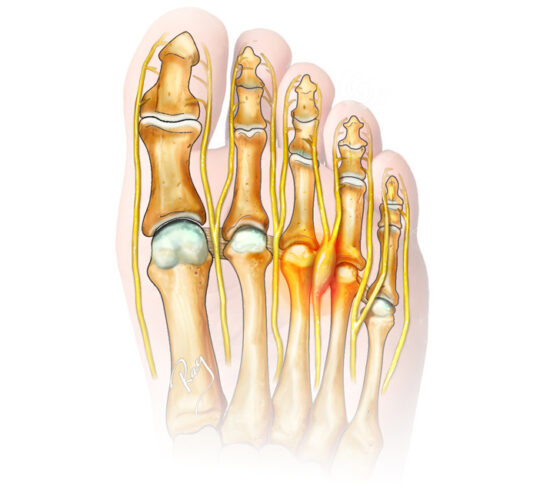Morton’s neuroma, also known as Morton’s syndrome or Morton’s disease, is a common condition that causes sharp pain in the forefoot. In this article, we explain everything you need to know about its causes, symptoms, and the available treatments to relieve the discomfort caused by Morton’s neuroma.

Morton’s neuroma: symptoms, causes, and treatment
What is Morton’s neuroma?
Morton’s neuroma is a compression of the interdigital nerve, usually occurring between the 3rd and 4th metatarsals, or between the 2nd and 3rd metatarsals. This results in sharp pain, burning sensations, and tingling in the forefoot. Some individuals describe the feeling as if they constantly have a pebble in their shoe.

Personalized support for treating Morton’s neuroma
If you suspect you may have Morton’s neuroma, we strongly recommend consulting your healthcare provider or visiting one of our clinics to meet with a certified orthotist.
Thanks to their expertise, our professionals can offer a tailored Morton’s neuroma treatment plan to help relieve your pain and address the condition effectively. Don’t hesitate to reach out for personalized care. Book your appointment online today!









